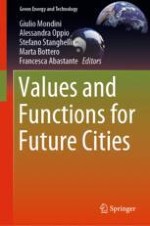This book features a selection of the best papers presented at two SIEV seminars held in Venice, Italy, in September 2017 and 2018, in the context of the Urbanpromo Green events. Bringing together experts from a diverse range of fields – economics, appraisal, architecture, energy, urban planning, sociology, and the decision sciences – and government representatives, the seminars encouraged reflections on the role of future cites in terms of sustainable development, with a particular focus on improving collective and individual well-being. The book provides a multidisciplinary approach to contemporary green urban agendas and urban sustainability, and addresses the demand for policies and strategies to strengthen resilience through concrete measures to reduce energy consumption, mitigate pollution, promote social inclusion and create urban identity.
